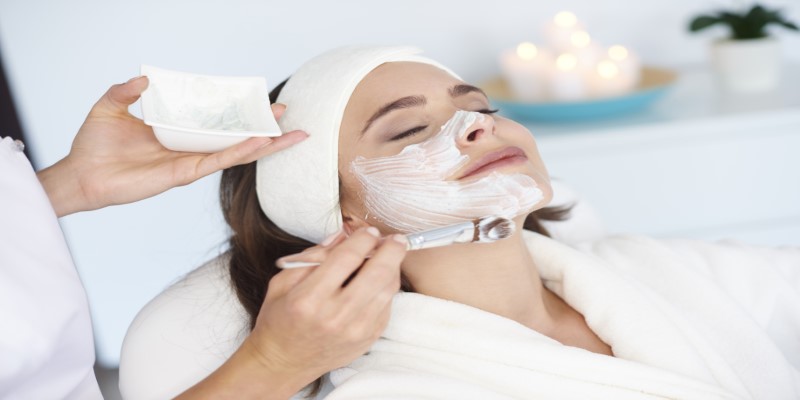Glycolic acid and retinol have been advertised as skin care miracles and must be used regularly. Glycolic acid and retinol benefit the skin in many ways. But should these products be used together? Unless you are a skincare professional, you won't recognize if glycolic acid and retinol work collectively or clash with your skincare goals. See whether or not glycolic acid and retinol work collectively and their advantages in this guide.
Retinol Basics
Retinol is another amazing exfoliator that may transform your skin if used properly. The component is a somewhat less concentrated form of vitamin A derivative retinoids. Retinol appears in several concentrations and forms. It's been studied for decades and works for natural aging, sun damage, hyperpigmentation, fine lines, wrinkles, and more. It acts by penetrating pores and speeding up cell turnover. Retinol speeds up skin cell turnover, which takes 30 days. The skin also produces more collagen, which can assist with various ailments. Its " gold standard" status in dermatology is due to this.
Glycolic Acid Basics
Alpha-hydroxy acids include glycolic acid. This set of skincare chemicals exfoliates the top layer of skin and eliminates dead skin cells and other debris. AHAs dissolve well in water. Natural glycolic acid is present in sugar cane.
Although glycolic acid serum has strong advantages, this superstar is in cleansers, moisturizers, and more. Like all AHAs, glycolic acid is best recognized for exfoliating. It removes dead skin cells, leaving the top layer clean and unencumbered. Additionally, without removing its moisture, it maintains natural oils. This powerful yet superficial glycolic acid serum acts just on the top layer of the skin.
Glycolic Acid vs. Retinol
Looking at both glycolic acid and retinol exfoliants at face level might make choosing one difficult. Both have benefits, but which is better?
Consider factors like age, skin type, and acne while deciding between retinol and glycolic acid for your routine. If you have stepped into your 30s, you should start using retinol immediately. However, if you are in your 20s, it is recommended that you add glycolic acid serum.
Using Glycolic Acid And Retinol Together

Here are some tricks and ways to maximize the benefits of using retinol and glycolic acid together:
Start With a Little Quantity
Start applying a small quantity of glycolic acid and retinol on your skin. Be cautious and patient for optimal results when using retinol and glycolic acid in your skincare routine. Glycolic acid and retinol enhance skin texture, tone, and appearance. They can also irritate the skin, especially when initially applied.
Start with one glycolic acid serum or retinol product. Choose a product with low active ingredient concentration to reduce discomfort. This lets your skin gradually adjust to the chemical.
Patch Test
Patch-test a small area before applying the glycolic acid serum to your face for allergies. Apply a little product to the inner forearm or behind the ear and wait 24 hours for any reaction. Regular usage is possible after your skin tolerates the product. Start with once or twice a week and increase if skin adjusts. Observe skin inflammation or sensitivity.
As your skin responds well to the product, you may progressively increase concentration or frequency. It's important to listen to your skin and alter your regimen to avoid over-exfoliation and irritation.
Use Glycolic Acid And Retinol Alternatively
Alternating glycolic acid and retinol on alternative evenings enables you to incorporate them into your skincare habit. Using glycolic acid serum and retinol alternate nights, your pores and skin can respond to each active aspect without being beaten. This reduces the risk of irritation or sensitivity while using one product at a time or together.
Keep retinol and glycolic acid for nighttime skin care. Both chemical substances may enhance UV sensitivity, putting the skin at risk of sun harm. Also, while utilizing these substances, you must use the correct sunscreen. Both retinol and glycolic acid enhance skin sensitivity. Use a water-resistant sunscreen with at least SPF 30. Use them most effectively at night to avoid sunburn and other solar-related troubles. Follow these steps for an effective nighttime skincare routine :
- One night, wash your face and apply glycolic acid serum. The initial concentration should be minimal and increased as the skin tolerates it. Use a moisturizer afterward. A moisturizer will hydrate and protect your skin.
- Next night, wash your skin and apply retinol. Start low and increase as your skin adjusts. Apply a moisturizer again to rehydrate.
Hydrate And Protect Your Skin

Glycolic acid and retinol may increase sun exposure. Therefore, use a moisturizer before applying any skin care product, especially if you use glycolic acid serum. Both treatments help remove dead skin cells but can also remove some of the vital oils needed to construct the skin barrier. Moisturizers can help you rebuild that barrier, protecting your skin from acne when it's weak. Also, ensure each product in your skincare program enhances the others.
Monitor Skin Reaction
You must regularly monitor your skin's glycolic acid and retinol response. Redness, severe dryness, or pain may suggest combined sensitivity. If you have these problems, stop using both products and consult a dermatologist.
Glycolic acid and retinol can improve skin health and brightness with adequate care. Be mindful of your skin's signals. Mild flaking, peeling, and transient redness are typical, but if they continue, you should slow down and let your skin recover. Always emphasize skin health by listening to its signs and reactions to changing your skincare routine. Consult a dermatologist for tailored advice and the best skin care plan.
Conclusion
Can glycolic acid and retinol used together? Yes, but only if you follow the right guidelines for securely mixing them. By utilizing soothing substances and avoiding numerous exfoliants or powerful compounds, you may help your skin repair and regenerate. Using the products that are your skin type can help you achieve your goals. Show off your brightest, most youthful skin with these tips!







